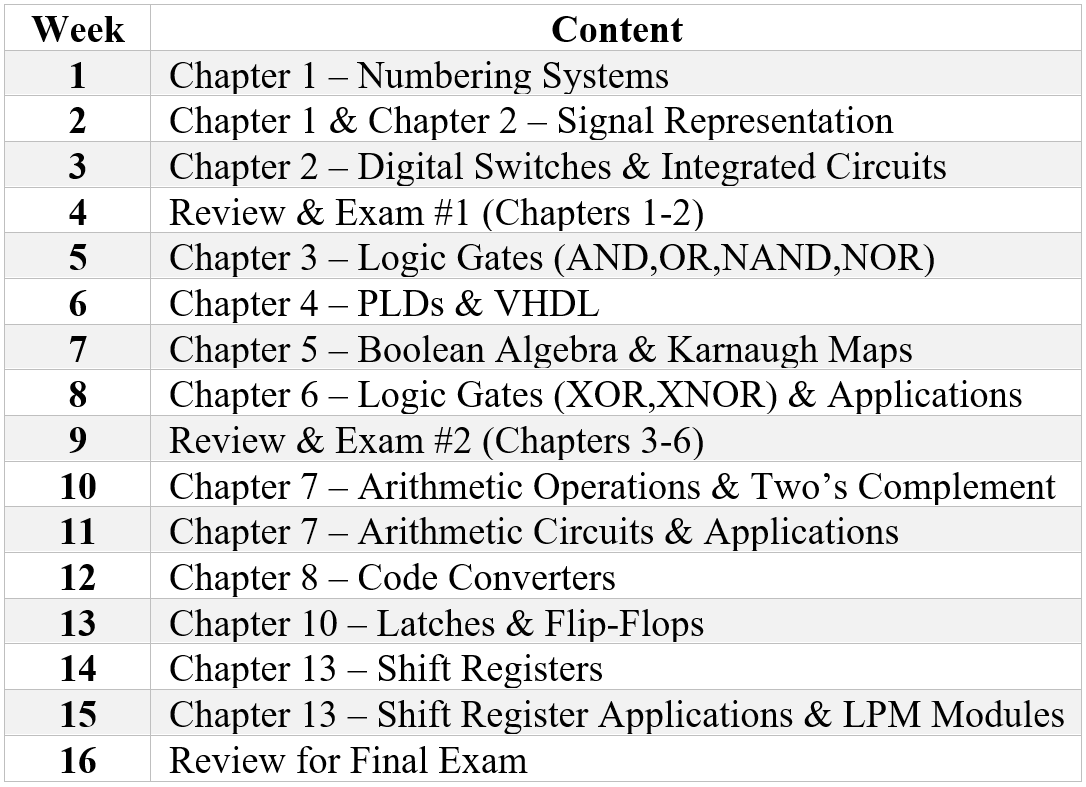Catalog Description:
Fundamental digital concepts including number systems, logic gates, Boolean algebra, Karnaugh Maps, and combinational logic. Topics include: combinational digital circuit design and analysis, minimization methods, and hardware descriptor languages such as VHDL.
Course Outcomes:
Upon successful completion of this course, students will be able to:
- Explain the basic differences between digital and analog quantities; show how voltage levels are used to represent digital quantities; and describe various parameters of a pulse waveform such as the rise time, fall time, pulse width, frequency, period, and duty cycle.
- Explain the basic logic operations of NOT, AND OR, XOR and XNOR gates and describe the basic functions of the comparator, adder, code converter, encoder, decoder, multiplexer, demultiplexer, counter, and register.
- Describe decimal, binary, quartal, octal, and decimal numbers; display proficiency in converting between decimal, binary, quartal, octal, and decimal numbers; and apply arithmetic operations to decimal, binary, quartal, octal, and decimal numbers.
- Apply the basic laws and rules of Boolean algebra to simplify expressions, convert to sum-of-products (SOP) form, and/or convert to product-of-sums (POS) form.
- Display proficiency in the use of a Karnaugh map to simplify Boolean expressions and truth table functions.
- Analyze and design basic combinational logic circuits, adders, comparators, latches, flip-flops, counters and shift registers.






